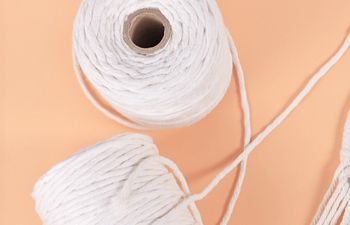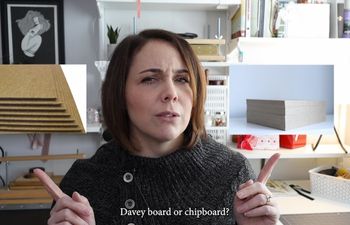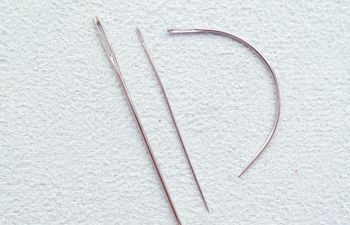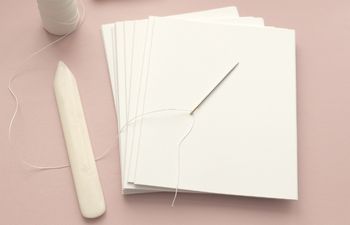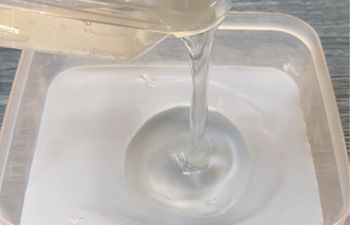If you ask about bookbinding cord, you’ll get a hundred different opinions. Some people will tell you to skip the critical thinking and just use good ol’ gardening twine. Others will tell you to use cooking twine or simple jute rope. I respectfully disagree.
I’ve tried everything you can imagine. Through the process of trial and error, I learned there are several properties that make a cord good for bookbinding. If it doesn’t have all of these qualities, then it will make more work for me in the long term.
In this post, I’ll share these qualities, why they’re important and how they impact the bookbinding process. I’ll tell you which cord I use in my own bindery and where to find some online.
Warning: I’m a technical person, so there’s probably more info in this post about cord than you’d ever thought to learn in your life.
Before we begin, I want to clarify the differences between twine, cord and rope. These three words have caused many bookbinder’s a migraine (for good reason).
What’s the difference between Twine, Cord and Rope?
To paraphrase the actual definition of each term:
- Twine (can also be called “string”) is composed of single strands of fiber wound together to create a ply (single ply, 2-ply, 3-ply…)
- Cord is several ply strands twisted together
- Rope is several cords twisted or braided together to add diameter and strength
Twine, cord and rope are similar in that they can be made of the same fiber and build upon one another, but don’t let this fool you into believing they’re the same.
When it comes to marketing, companies love to use the word they think the consumer is looking for (even if the product isn’t exactly what the customer needs or wants).
Here’s a great example. This result popped up when I searched for “twine.” What is a consumer to think if they see “Linen Cord Twine”? Twine and Cord are not the same thing. Twine is twine and cord is cord. Whether the advertisement was dynamically created to include my search term (“twine”) or not doesn’t matter. It’s confusing as hell. Always read the product description before buying and you should be okay!
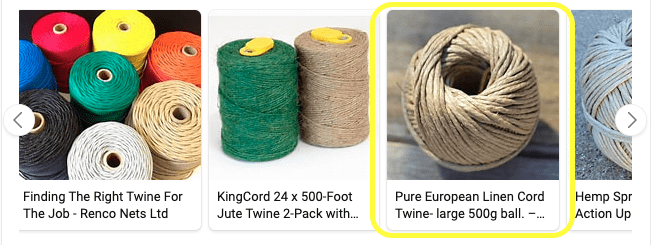
When do bookbinders use twine vs. cord vs. rope?
I can’t speak for others, but I only use twine or cord in my bindery. I’ve never had a need for rope.
Since twine is a bit thicker than sewing thread, I use it to tie up leather bindings while they set or to create small cores for headbands. Cord is perfect for everything else (sewing supports, standard headband cores, spacer cards, etc.).
3 Features to look for in a good bookbinding cord
Now that we have some clarity on terms and use, let’s get to the point of this post. Which qualities make for a good bookbinding cord?
Fiber
In bookbinding, we talk a lot about 100% cotton and 100% linen. While the terms may be used interchangeably, they’re not the same.
100% cotton is made from – you guessed it – the cotton plant. Alternatively, 100% linen is made from the flax plant. While both are strong, cotton is considered more durable. In bookbinding, we combine these two fibers in various ways, across different materials, to add strength to a book.
Since cord is usually used as a sewn support in bookbinding, it makes sense to go with 100% unbleached, unwaxed, minimally processed cotton fiber.
While I prefer cotton fiber (more on that next), 100% linen cord is my second choice. If you can’t find 100% cotton, go with 100% linen cord and skip the blends.
Softness
Whether the approach is Sawn-in or Sewing on Cords in Bookbinding, having a softer, more pliable cord can make it easier to thin, fray and conceal fibers beneath a book’s cover material.
In my experience, stiff cords require more thinning and knot frequently during the fraying process. Softer cords are flexible enough to untwist, thin and fray without issue. Cotton is ideal because it can be washed repeatedly to gain a softer feel while maintaining strength. Linen needs to be processed (e.g bleached) to soften.
Twist tightness & ply
Ply
Cord is usually sold by the ply (3-ply, 4-ply, 5-ply, etc.). In my experience, buying a larger ply is better. I buy a 5 or 10-ply cord and pull it apart to whatever size is needed for my project. Any extra is kept around to create headband cords or spacer cards.
Twist tightness
In my experience, a well-twisted cord is easier to sew and work with overall. I don’t necessarily need a super tight twist, but I do look for one with as little fray as possible. Less fray means there is less to get in the way while sewing and weaving through boards.
The 100% cotton cord I prefer
Given the qualities mentioned above, it makes sense that I gravitated toward Macrame cord. Macrame cord is:
- 100% cotton that’s softer than typical cord
- unwaxed, unbleached, unprocessed
- available in various ply
- sold by diameter in mm (2mm, 3mm, 4mm, etc.)
- flexible, but strong enough to maintain shape
- twisted tight with very little visible fray
When buying, be sure to keep the following in mind:
- colorful macrame cord has been processed or treated with dyes; some dyes may be acidic
- some macrame cord is too soft and will not hold shape; be sure to check reviews or try it out
- biodegradable options may contain acid from recycled materials
I personally use Cyrico Macrame cord. It’s available on Amazon. While I detest buying off of Amazon, I really love the cord and enjoy working with it.
Cyrico 100% cotton Macrame cord costs about $6 for 110 yards.
The 100% linen cord I prefer
My second choice for bookbinding cord is 100% linen. I prefer the Garniture brand. Take a look at Garniture cord vs. C&D cord. You can see the fraying of C&D, even though it’s a high quality cord.
Both of these work well, but I still struggle with the stiffness when thinning or fraying.

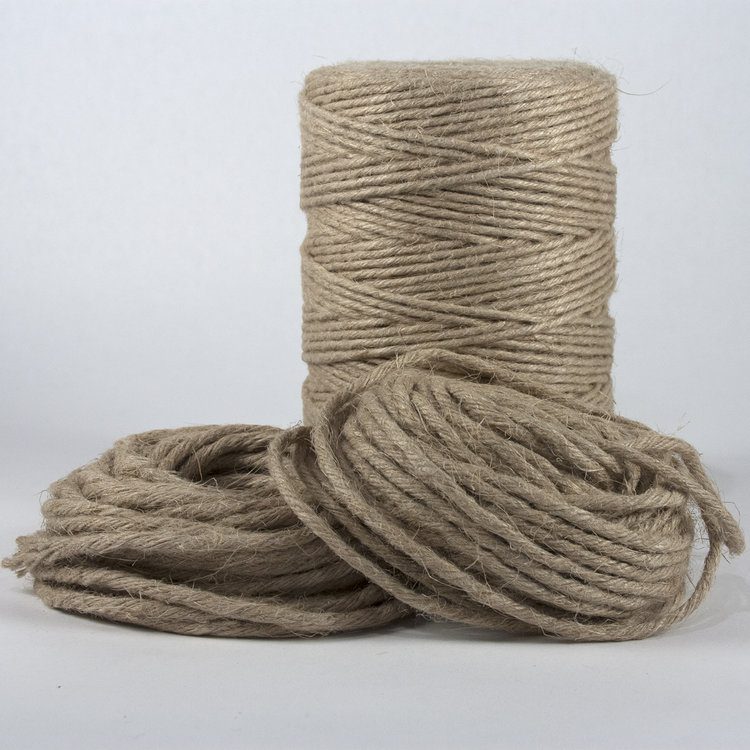
Garniture 100% linen cord costs about $151 for 110 yards. To make it more affordable, Colophon Book Arts sells Garniture for $2.75 per 2-yard package.
In Summary
100% cotton and 100% linen are both strong, durable cord options. I personally prefer 100% soft cotton cord because it’s easier to work with throughout the entire book making process. While I choose to work with Cyrico Macrame cord, you might do better with a different brand. If you find a brand that you like, please let me know! I’d love to give it a try and review it here on my blog.
Best of luck to you as you look for the perfect bookbinding cord for your next project!
Resources
- Check out the Garniture brand and C&D brand cords mentioned above from Colophon Book Arts
- How to Choose the Right Size Bookbinding Thread
- Know the Difference | Waxed, Unwaxed and Polished Linen Thread
- How to Setup and Use a Sewing Frame for Bookbinding
Are you new to bookbinding?
Check out my New Bookbinder Guide for helpful information or read my post, 3 Amazing Learnings from My First Visit to the American Academy of Bookbinding.
Thanks so much for letting me share this with you today. I hope it was entertaining, if not helpful. Now, go follow me on Instagram for the latest news + technical videos I only post on that platform.
ALL my best,
Misty
